There are few epochs and artists that have managed to impose themselves in the collective imagination like the Belle Époque and Henri de Toulouse-Lautrec, whose unmistakable style, imprinted in the posters of the time, is recognized even by those who have little familiarity with art.
The new exhibition for spring 2024 at Palazzo Roverella focuses precisely on Henri de Toulouse-Lautrec. However, it is not the "usual exhibition" on the post-impressionist artist, whose celebrity is mainly due to his role as a poster artist in Belle Époque Paris. Instead, it is an international exhibition project that once again renews the synergistic collaboration between the Cassa di Risparmio Foundation of Padua and Rovigo, the Municipality of Rovigo, and the Accademia dei Concordi, with the decisive support of Intesa Sanpaolo.
The city of Rovigo, whose cultural awakening is driven by the commitment to bring top-notch artists and curatorial teams capable of attracting tens of thousands of visitors, sometimes approaching 100,000, as was the case with Kandinsky, thus becomes the stage for an event that aims to restore Toulouse-Lautrec to the status of a great artist, draftsman, and painter, as well as lithographer, deserving a prominent place in the history of late 19th-century art.
The exhibition "Henri de Toulouse-Lautrec" features the artist born in Albi in November 1864 as its protagonist, but also other artists whom he had the opportunity to associate with in the Paris of those years, and Paris itself, represented through new protagonists. They were intoxicated by a lifestyle that found entertainment in venues like Le Chat Noir but also consumed by human dramas and devastated by the abuse of absinthe, until the outbreak of the First World War marked its end.
Below are the key points of the exhibition, as highlighted by the curators themselves, Francesco Parisi, Fanny Girard (director of the Toulouse-Lautrec Museum in Albi), Jean-David Jumeau-Lafond, and Bertrand du Vignaud, Toulouse-Lautrec's great-nephew and closest living relative, who was also present at the exhibition's inauguration. These are the aspects visitors must not overlook.
The reconstruction of the historical, social, and cultural context
No one knew how to depict that world, which he knew well by frequenting it, like Henri de Toulouse-Lautrec. And he did so with a new stylistic approach, laden with irony but also with melancholy. He lived a short life, dying in 1901, which he dedicated to art and the representation of the human comedy of his time.
The exhibition presents connections with other contemporary artists such as Gauguin and Degas, but also Boldini, and showcases works such as "Pornocrates" by the Belgian painter Félicien Rops, painted when he lived in Paris. Rops led a controversial, nonconformist life and focused his work on themes particularly provocative for Catholic believers, related to eroticism, death, and Satanism.... read the rest of the article»
Not to be forgotten is the literary context, important for understanding the society depicted in the drawings and paintings on display. Bertrand du Vignaud, Toulouse-Lautrec's great-nephew, has described an interesting parallel between Marcel Proust and the artist, who never met despite living in the same era and frequenting the same places, but who looked at and represented common subjects in different ways.
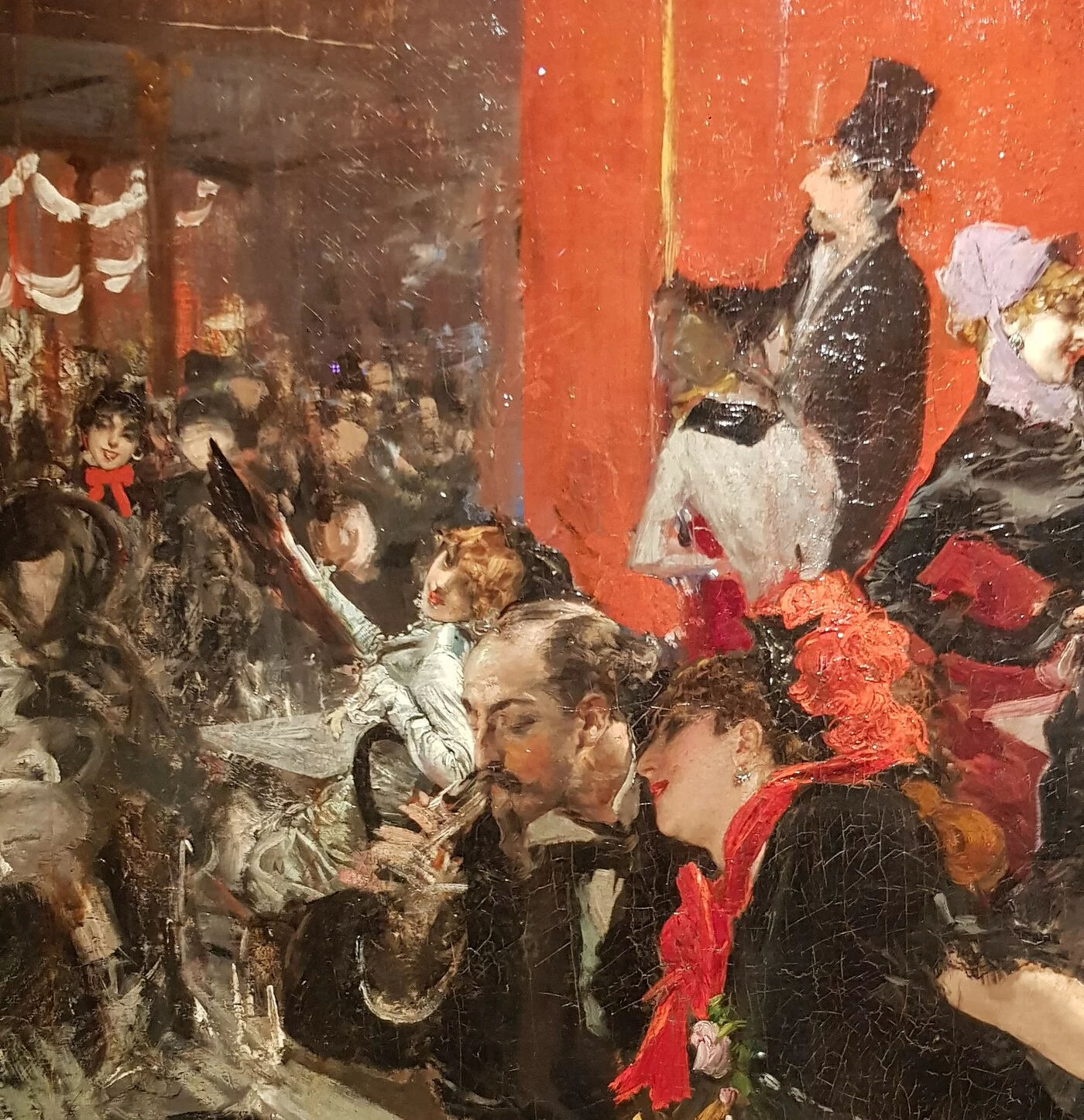
Giovanni Boldini, Scène de Fète au Moulin-Rouge, 1889 c., olio su tela, Paris, Musée d'Orsay (dettaglio)
The quantity and quality of the exhibited works
Essential to the success of this ambitious exhibition project is the involvement, alongside Francesco Parisi, of Fanny Girard, director of the Toulouse-Lautrec Museum in Albi, and Jean-David Jumeau-Lafond, with the collaboration of Nicholas Zmelty (Posters and Engravings section). The scale of the loan from the Museum of Albi, with around twenty works, is unparalleled, especially compared to previous exhibitions organized in Italy. Here, both youthful and mature works of the artist are displayed, showcasing Toulouse-Lautrec's immense talent as both a draftsman and a lithographer, totaling 60 works out of the total 200 exhibited.
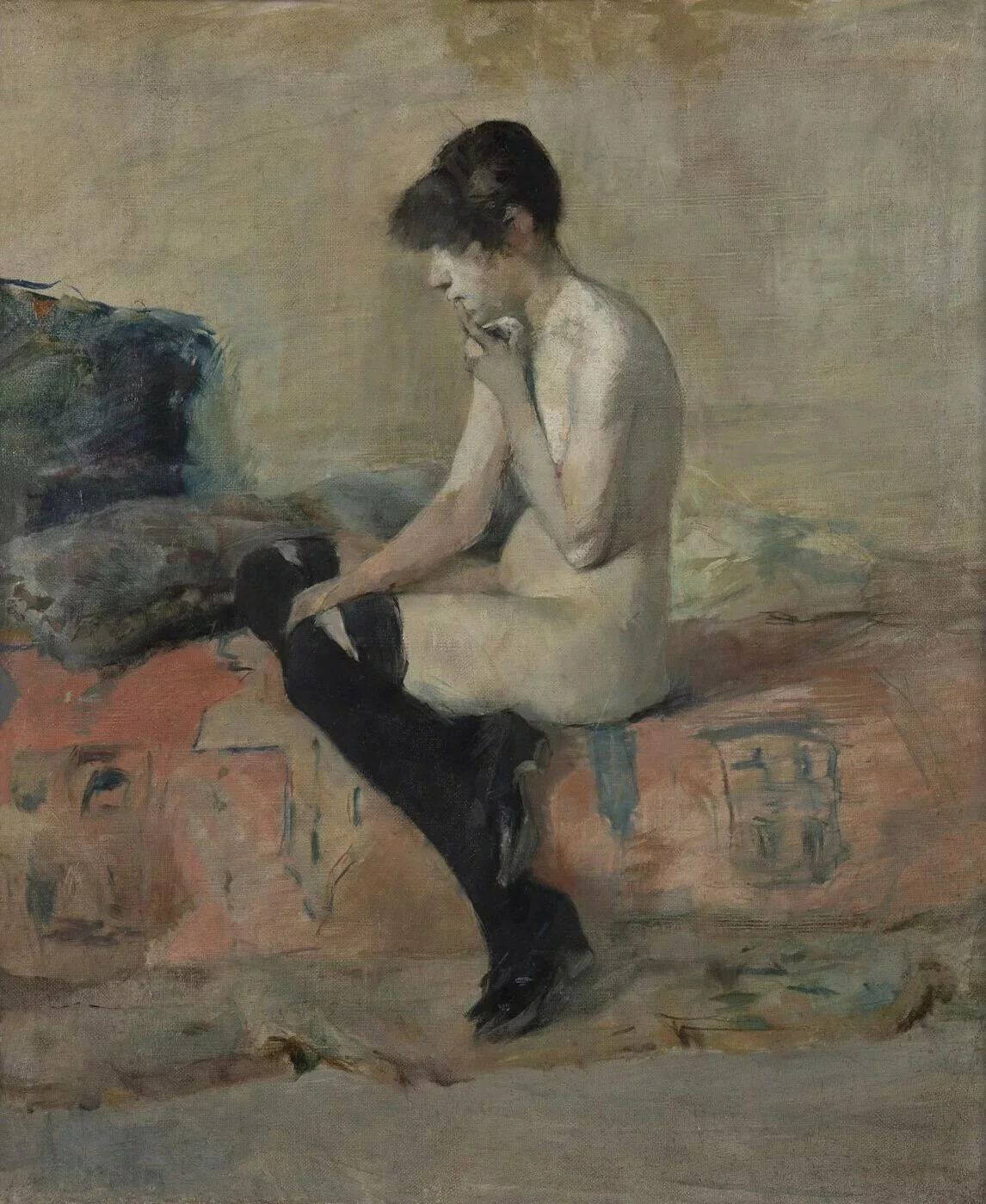
Henri de Toulouse-Lautrec, Etude de nu. Femme assise sur un divan, 1882, olio su tela, Albi, Musée Toulouse-Lautrec Foto © F. Pons, Musée Toulouse-Lautrec, Albi, France
The "Peintres du Petit Boulevard"
The exhibition at Palazzo Roverella dedicates a room to the group of Peintres du Petit Boulevard, of which Toulouse-Lautrec was a part, and to the small exhibition organized by Vincent Van Gogh in November 1887, in contrast to the more established Impressionists of the Grand Boulevard (also read our article on the major exhibition on Van Gogh in Trieste). On that occasion, many of the artists involved exhibited scenes of brothels, resulting in very little success for the initiative.
Paris and the Belle Époque
The second major protagonist of the exhibition can only be Paris. The Belle Époque, synonymous with carefree living, was a post-war invention, but the emergence of new venues like Le Chat Noir, the first artistic cabaret founded in 1881 by Rodolphe Salis, and the pursuit of entertainment were indeed the great novelties of those years. Previously, people gathered in cafes and bars, but it was only with the cabaret venues that spaces opened up where artists and poets gathered to make music and recite poetry.
In this room, there is also space to remember the shadow theater performances staged at Le Chat Noir, which became a significant phenomenon with tours even abroad. Many notable figures of the time passed through that cabaret, including the future King Edward VII.
Absinthe and "the Artificial Paradises"
To narrate a fundamental and socially dramatic aspect of that era, a room in the exhibition is dedicated to absinthe, the beverage whose consumption grew enormously in Paris until it was banned in 1914. In addition to presenting some objects, the narrative includes paintings and drawings depicting women and men drinking it or under its influence, as well as some posters advertising it. The "Green Fairy," as it was called then, was promoted by associating it with seductive female images, becoming the Bohemian emblem of artists and poets. Even Degas and Van Gogh made ample use of it.
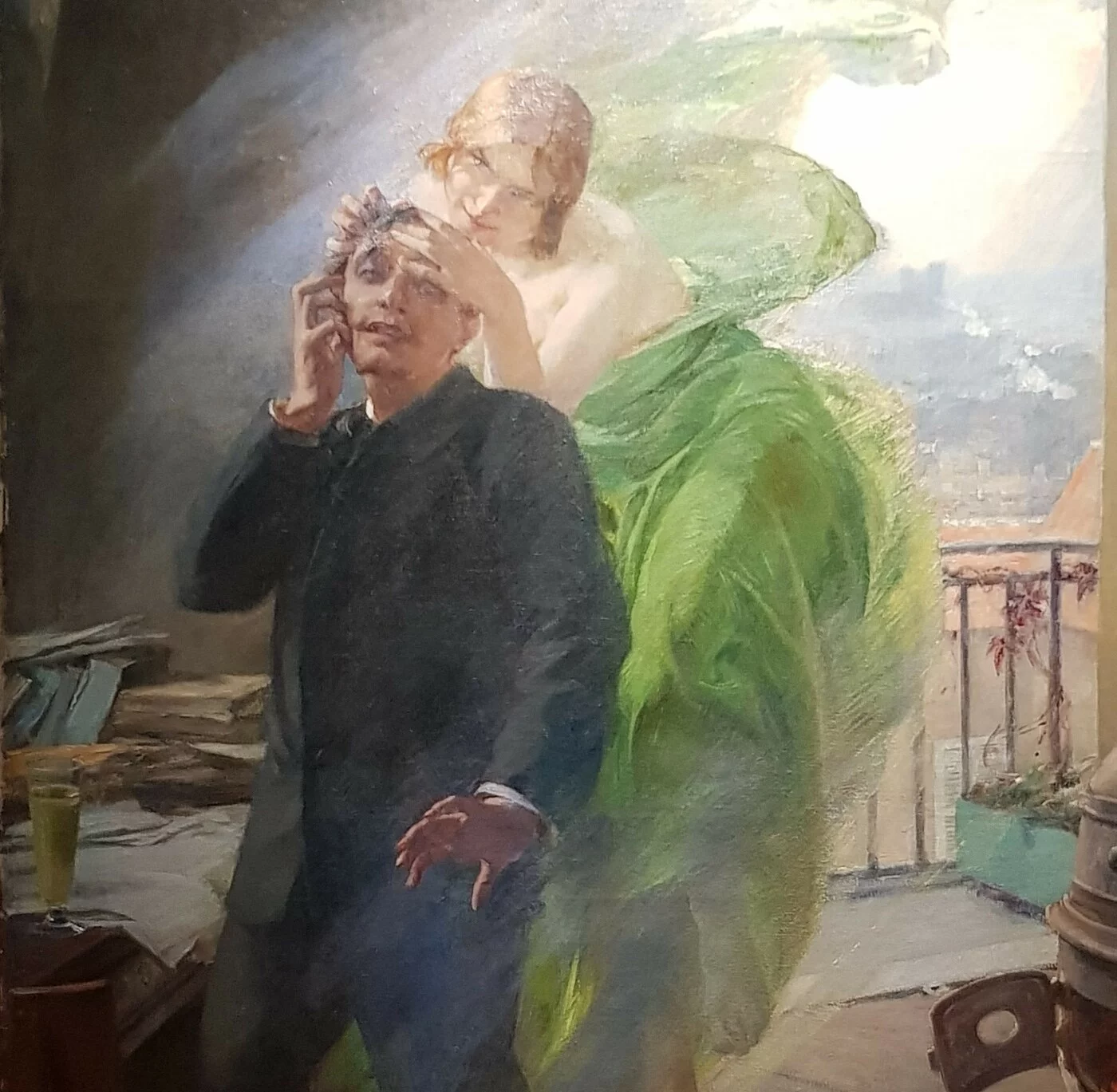
Albert Maignan, The green muse, 1895 - Huile sur toile. Musée de Picardie, Amiens (dettaglio)
The Movement of Incoherent Arts
Another very important section of the exhibition is dedicated to an artistic movement that departed from tradition in the early 1880s. This is the "Arts Incohérents" (Incoherent Arts), an artistic movement founded by Jules Lévy in 1881-82, a time when the traditional annual Salon was entering a crisis. The Incoherent Arts aimed to be a sort of burlesque and parodic counter-Salon, combining artistic expression with a form of public entertainment, often with works not even created by true artists. Their main enemy was seriousness.
For over ten years (1882-1895), artists, humorists, writers, poets, people linked to the world of the press and theater, in total joy and carefreeness, organized exhibitions that, under the pretext of making people laugh, denounced the art and customs of their time.
Well-orchestrated advertising campaigns and a benevolent press, as well as carefully chosen venues, contributed to the success of these events, albeit also arousing strongly adverse reactions.
Over time, the works of the Incoherent Arts seemed to have disappeared, and only a few years ago (2018) a group of these works was rediscovered, deemed so precious that they were declared a national treasure, and thus never exported and exhibited to the public before today.
It is therefore an absolutely precious opportunity that deserves great attention from visitors. Here you can admire what can be considered the first monochrome in history, as well as a work created with a curtain that seems to anticipate Duchamp's ready-made, also in this case by 2-3 decades.
Illustration and advertising posters
Of course, a section dedicated to illustration and those advertising posters that made Toulouse-Lautrec a sort of star in that art could not be missing, leading him to gradually abandon painting.
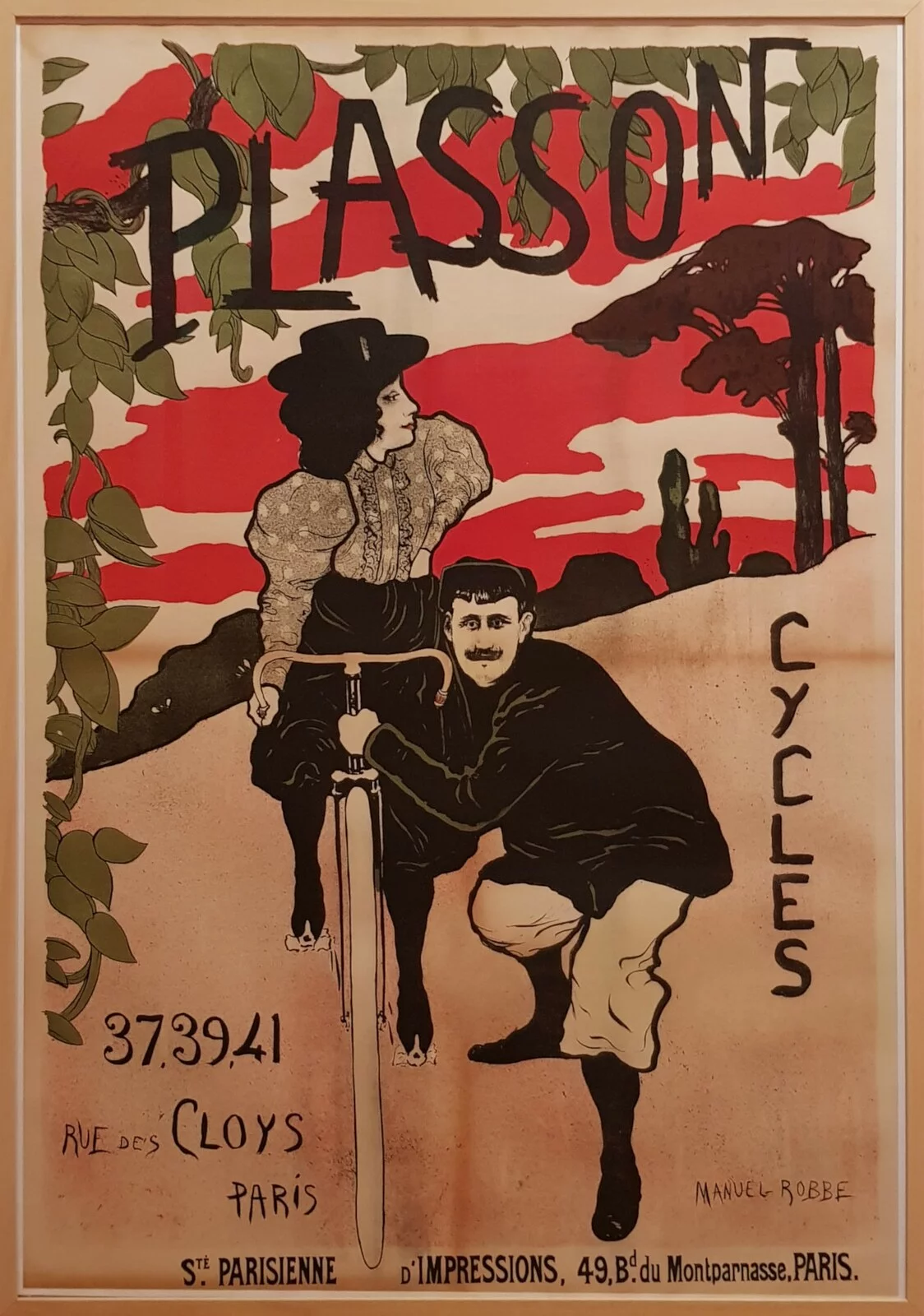
The exhibition devotes adequate space to the theme, presenting the production techniques. Also displayed is a precious lithographic stone, rare because to prevent unauthorized reproductions, the artist used to destroy or scrape the matrices after printing.
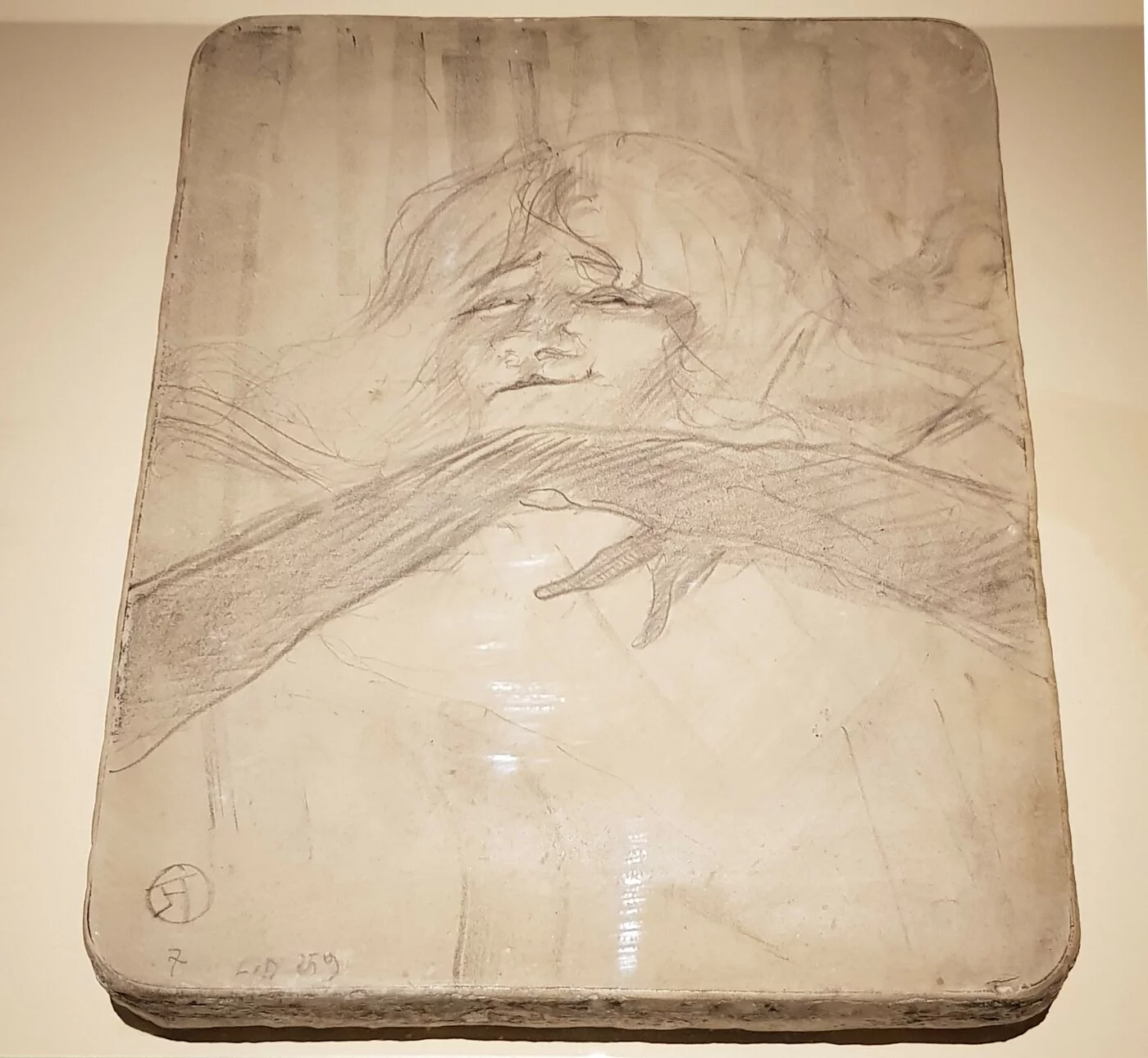
If we've convinced you that the exhibition is worth visiting, be sure to read the other information on the event's page.
Antonio Giuliani
Pubblicato il February 24, 2024
Itinerarinellarte.it
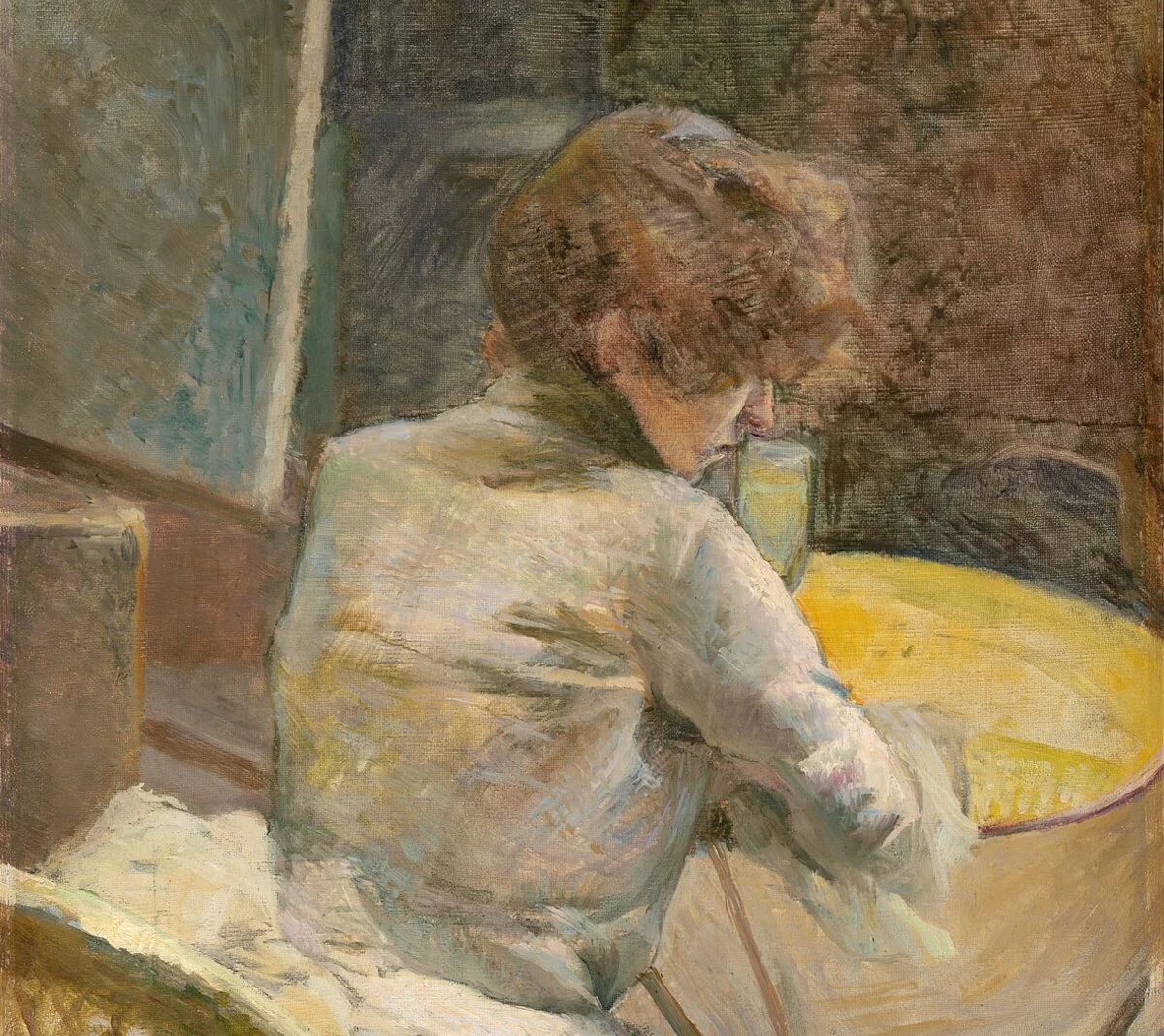
 itinerarinellarte.it è un sito che parla di arte in Italia coinvolgendo utenti, musei, gallerie, artisti e luoghi d'arte.
itinerarinellarte.it è un sito che parla di arte in Italia coinvolgendo utenti, musei, gallerie, artisti e luoghi d'arte.